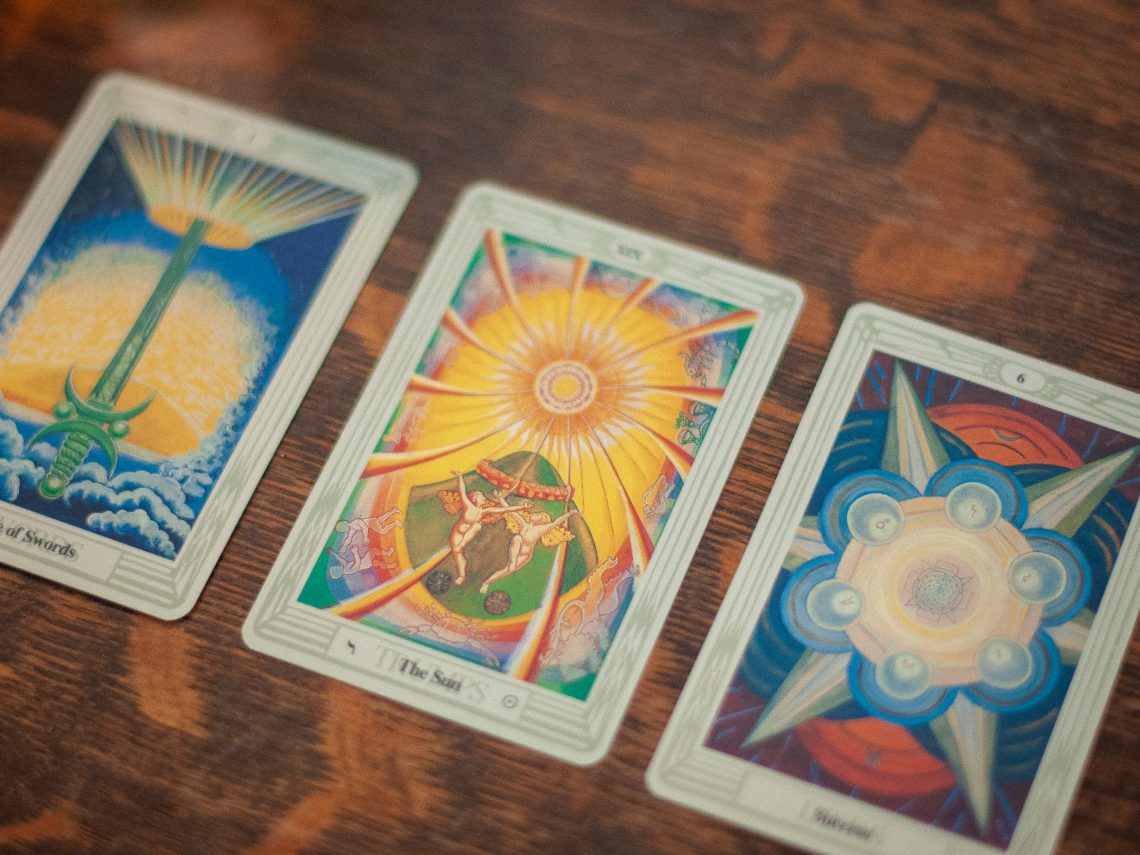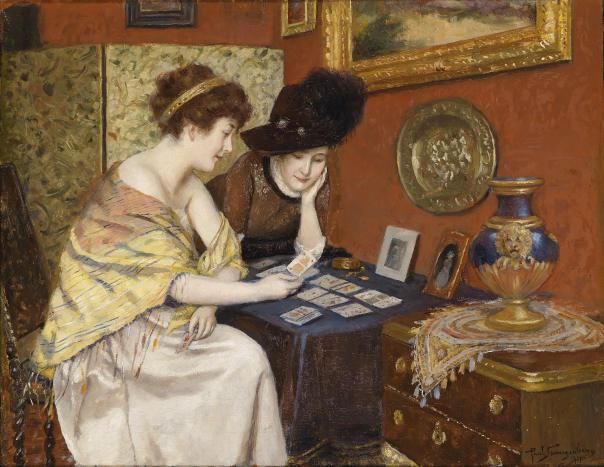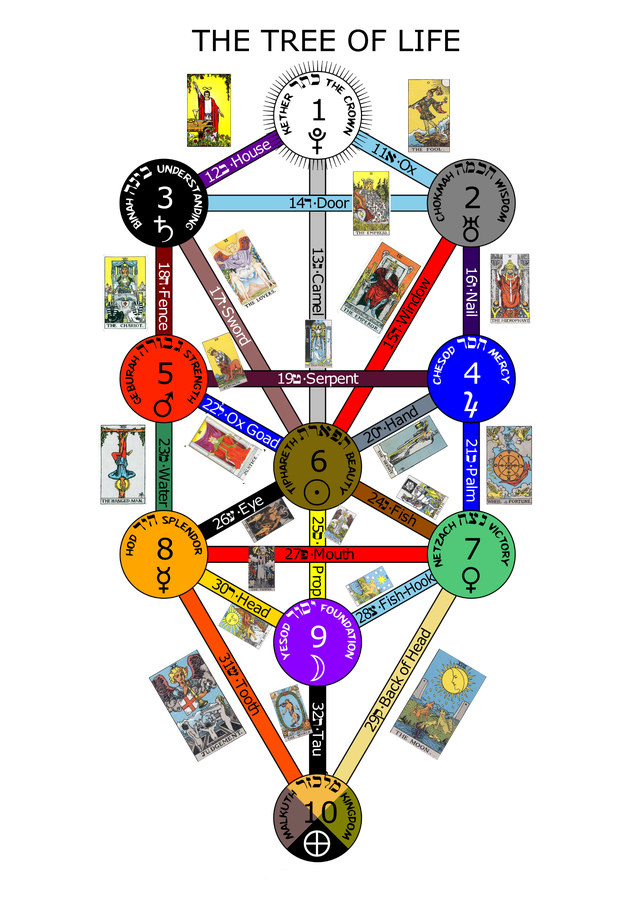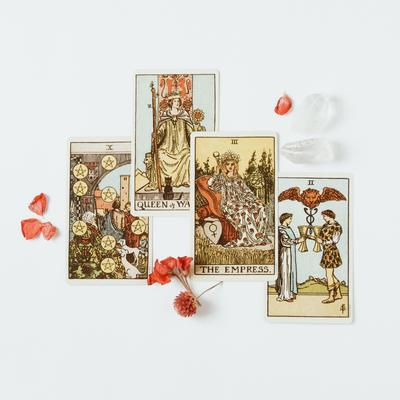
The Language of the Tarot and What It Offers Us
A few weeks ago, when I told everyone that I was going to begin reading Tarot out of the shop I promised a post about my approach to Tarot. Since then, I have been so busy actually reading Tarot that I haven’t gotten around to writing about it!
A funny thing happened during this same period of time – my literal sight changed. I abruptly had to adjust to the fact that my reading glasses had become no longer a choice, but a necessity. After a few days of headaches I broke down and bought a stronger pair. Now you’ll see me walking around with them on my head. I know it’s not particularly cool to use glasses to hold one’s hair back, but I do enjoy this perk in the summertime.
I’ve been thinking a lot about Tarot now that I am talking about it more often, and looking at it in service to others. Most of my peers in hermetic studies have a similar understanding of Tarot to mine. Some Tarot readers I have met have a slightly different take. And then I’ve met people in the shop and out in the world who have some very different opinions about how and why the Tarot works to mine. Here I’ll attempt to explain my take on it without seeming too dry. I am, after all, a highly practical Capricorn rising.
Part of the beauty of reading Tarot is that it can be practical. There was a recent article in Teen Vogue (which has really been killing it lately) about how Tarot is used by a therapist as a tool for healing.
“The work that I do is really focused on trying to help people figure out what it is that they want, what is important to them, what are their values, and then also what is getting in the way of them moving in that direction,” Dore told Teen Vogue. “There’s all these different ways of helping people see that for themselves through the tarot cards.”
How Tarot Cards Are Used to Help Mental Health. Erica Euse. Teen Vogue. December 27, 2018.
I would agree. I see a lot of healing happen during and after a reading. A reading can be, for some people, a revelatory experience, providing a client with the affirmation that they knew the answer all along, and were right to trust their gut. Often, I see Tarot helping the querent (the one asking the questions) to feel more seen than they have been by the people around them. That alone can be very healing. Because of the language it speaks, in symbols and archetypes, a querent may easily identify themselves and others close to them in the cards. Then, a reading may help one to examine relationships from perspectives that might not have been considered prior. Small synchronicities that emerge during the course of a reading are like breadcrumbs leading us to a deeper sense of ourselves.

What is the tarot, and where does it come from?
The Tarot is a pack of 78 cards depicting four suits, as in the modern deck of playing cards, and 22 Atu (Trumps or Keys) which are an additional numbered set of symbols. In the early 19th century, a cipher was discovered that provided a correspondence between the letters of the Hebrew alphabet (which number 22) and the Tarot Atu or Trumps. For scholars of Tarot, this further confirmed that the whole of the deck has a particular and significant arrangement that reveals the order of the universe. Therefore, in a sense, having a Tarot reading is a way of orienting oneself in the universe.
The origin of the Tarot is unknown, but it’s been suggested that it goes back as far as ancient Egypt, and it most certainly made its appearance during the Middle Ages, when it was used primarily for fortune telling in some cultures. It has often been historically referenced as the “Tarot of the Bohemians” or the “Tarot of the Egyptians.”
Psychologist Carl Jung explored the psychology of the Tarot and wrote about it in his essays on archetypes. Many view the Tarot as a map of the hero’s journey or the Soul. We learn about our nature and the nature of the world around us by examining the archetypes of the cards and our attitudes toward them. Likewise, the correspondence of the Atu to the Hebrew letters and the paths of the Kabbalistic Tree of Life gives us a picture of the Soul’s journey toward God. There are many layers of meaning and correspondence revealed by the cards as one progresses in their studies.

In recent years, I have been studying Tarot through the lens of Kabbalah and astrology, and the sophistication of the system continuously delights and mystifies me. I continue to uncover new meaning in it’s beautiful system. I believe it would be easy to study one’s whole life and never run out of material. There remains so much to be written and considered.
How do I choose a deck?
When I first began reading cards, I used the traditional Rider Waite deck that is sold in most bookstores. The clear and beautiful illustrations by Pamela “Pixie” Coleman Smith are classic, and much can be inferred from the mood and symbols within the card images while learning or using them to read intuitively. Any deck following the traditional Tarot format is a good deck to learn on, provided that the illustrations resonate with you.
Many people find it difficult to learn Tarot using some of the newly popular minimalist decks, or ones that use alternative numbers and symbols for the cards. And now there are many gorgeous and independently published oracle decks available. They are very fun to play with or to use for meditation and intention work, but they don’t generally correspond with the Tarot system.
I carry a variety of traditional Tarot decks in the shop, as well as the classic Smith-Waite deck, which gives illustrator Pixie Coleman Smith the honor she deserves as the designer. She was quite a woman!
As I progressed in my studies I was attracted to the complexity and beauty of the Thoth Tarot, which includes alchemical, Kabbalistic and astrological correspondences that add levels of meaning. Artist Frieda Harris illustrated the Thoth deck in a vibrant Art Deco style that was popular at the time, and worked tirelessly with Aleister Crowley over a period of five years to complete it. Many consider it Crowley’s magnum opus, as he passed away soon after it was completed and it was received so well. This is the deck I use to read for myself and others.

What can the Tarot tell me?
A Tarot reading can provide clarity on matters that feel confusing or hidden to you. If you’re going through a transition or seeking change, the cards can illuminate a pathway or offer an alternative viewpoint on the existing one. Sometimes a reading will give you an affirmation of what you already know, but have perhaps been unable to look at, and this can be deeply meaningful. It can provide insight that allows you to go inward, for healing and to deepen your spiritual practice. The Tarot is a way of connecting you with the Divine.
When clients come in, they often have a specific matter to discuss. We can structure the reading to look at an overview of life and the conditions surrounding you, and then explore specific matters with a variety of spreads. As an intuitive, I can also share any impressions that come up in the context of the reading. This often helps clarify challenging cards and areas that lead to more questions. Together we can discuss the strategies the cards present to work with any areas of tension. It’s important to remember that ultimately, we all have the free will to change or adjust to our situation. With this in mind, a reading can offer empowering directions and mindsets.
To book a reading with me…
I am currently booking Tarot readings by appointment only. There may be time to available for you short notice, for a pressing matter, so feel free to be in touch! You can call the shop at 518 892 2289 or email me at shop@starandsplendor.com to book a time.
I look forward to exploring what the cards have to say with you!

